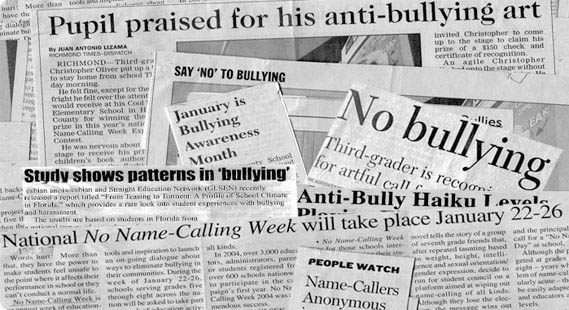
Image credit: Wikipedia
Writers in PR and marketing frequently apply headline-writing formulas in an attempt to increase click-through rates. Posing questions and including numbers, adjectives, superlatives and well-known names are some of the common formulas, as in “10 Best Headlines Ever.”
However, a new study finds that those type of click-bait headline-writing techniques don’t work particularly well. Descriptive, factual headlines may be more effective.
Chartbeat analyzed tests from its clients, including more than 100 publishers and 10,000 individual tests. Results were mixed. Few fill-in-the-blank headline formulas achieved significantly higher-than-average click-through rates. In one exception, headlines with demonstrative adjectives – such as “this,” “that” and ‘these” did enjoy above average click-through rates.
The study shows that publishers are better off concentrating on writing great headlines, not following specific styles formulas that can lead to clichés, says Chartbeat data scientist Chris Breaux.
How to be an Effective Headline Writer
“If you want to be an effective headline writer, maybe there is no substitute for creativity and attention,” advises Breaux. “Blindly following guidelines can lead to copy that sounds cliché at best, and actively off-putting at worst. Still, effective headline writing can make quite a difference in the success of your content — after all readers have to get to the actual articles somehow — so it can be expensive to get wrong.”
Leading newspapers such as The New York Times and Washington Post have understood the value of descriptive headlines and used them almost exclusively for decades. They also now apply the same informative headline-writing approach in their online services.
Chartbeat (which offers a headline-testing service) also recommends extensive testing. Although extensive testing requires more time and effort and can delay posting of the top choice, it’s worth the effort, Breaux told Poynter. Publishers who tested six variants identified a headline that garnered 2.6 times more clicks that the average.
An analysis by HubSpot and Outbrain released earlier this year also challenged accepted protocols of headline writing. Surprisingly, headlines with favorite words like “you,” “easy” and even “how to” performed worse than average, according to the analysis of over 3.3 million paid link headlines on over 100,000 websites.
Internet users have evidently developed immunity to click-bait teaser headlines, overused words and headline formats.
The Importance of Meaning
Meaning, reader interest and searchability are the most important elements of headlines, said John Schlander, digital general manager of the Tampa Bay Times, who teaches Poynter’s News University course on digital headline writing. Good headlines depend on the site and the story’s characteristics – it can’t be reduced to one-size-fits for every situation, he told Poynter
Although a good tool, A-B testing is limited, he said. It works best for choosing headlines already on the home page, but is less effective for testing alternates in social media and search engines.
These are a few key tips on creating factual, descriptive headlines.
Be direct. Go straight to the heart of the matter, without any attempt at cleverness, advises Bob Bly in The Copywriter’s Handbook.
Short. Effective headlines are about eight to 10 words, convey one idea and do not extend over one line, unless a subhead follows, recommends Jennifer Powell at Crowd Content.
Specific. Be as specific as possible with your headline in terms of what you intend to present in your content, she adds. Headlines that let readers know what to expect tend to perform better.
The End of Click-bait Headlines?
Do Chartbeat’s results mean that supposedly tried-and-true headline techniques have become overused? “Our headline testing product was released just this year, so we haven’t been able to see if headline effectiveness has changed over time,” Breaux told Poynter. But it’s something we’d love to look into toward the end of 2016.”
While new research provides important insights, the most important strategy for PR and marketing writers is to analyze their own CTRs and page views to determine what headlines work best for their own organizations.
Regardless new research, headline writers are unlikely to abandon their fondness for “how to” any time soon.
Bottom Line: Factual, descriptive headline are better than common headline-writing formulas, reveals a new analysis of click-through rates. As readers become more bored with click-bait and fill-in-the-blank formulas, tailoring headlines to particular posts will become more important. That’s likely happy news for creative PR and marketing professionals.
William J. Comcowich founded and served as CEO of CyberAlert LLC, the predecessor of Glean.info. He is currently serving as Interim CEO and member of the Board of Directors. Glean.info provides customized media monitoring, media measurement and analytics solutions across all types of traditional and social media.




